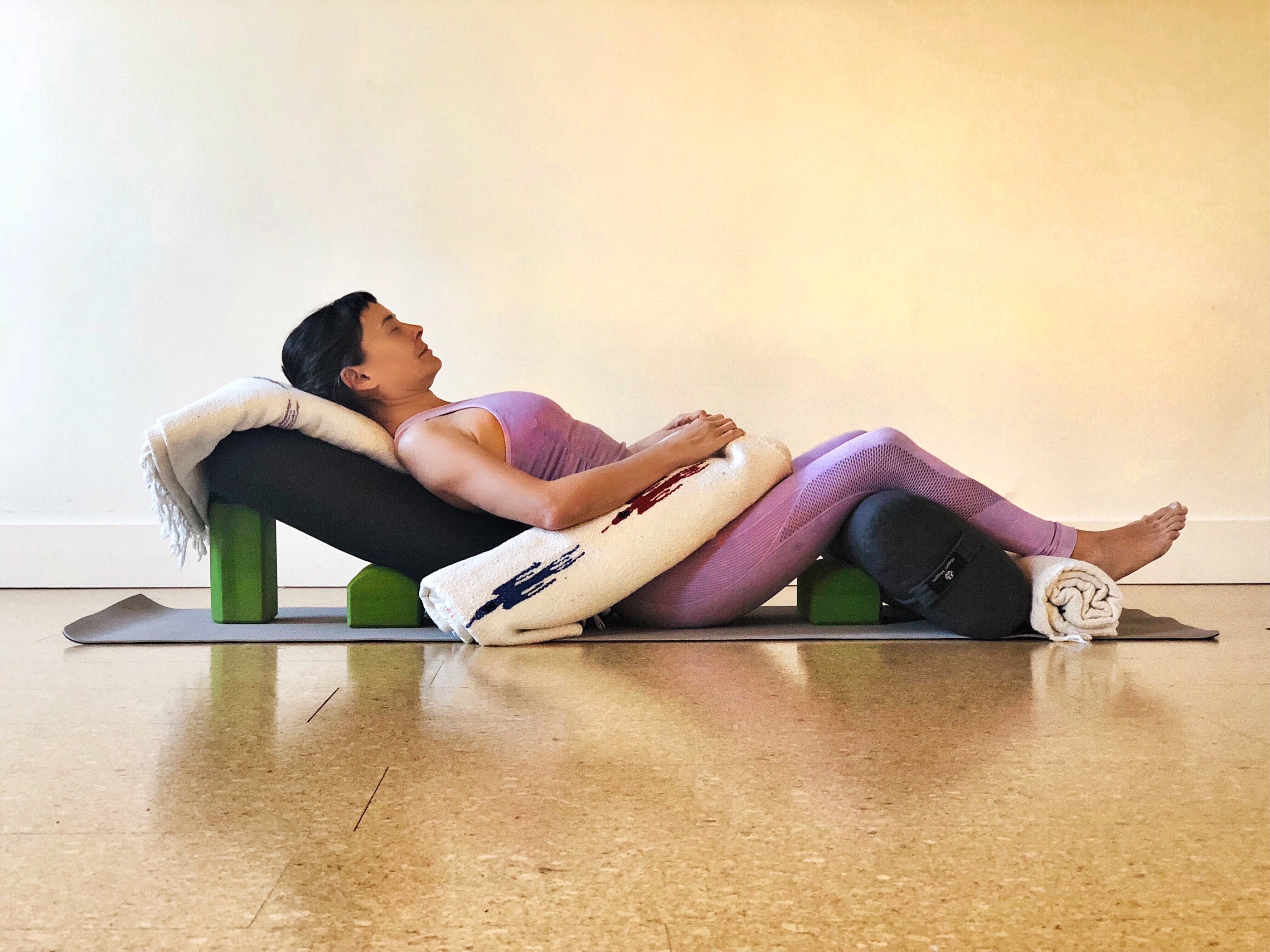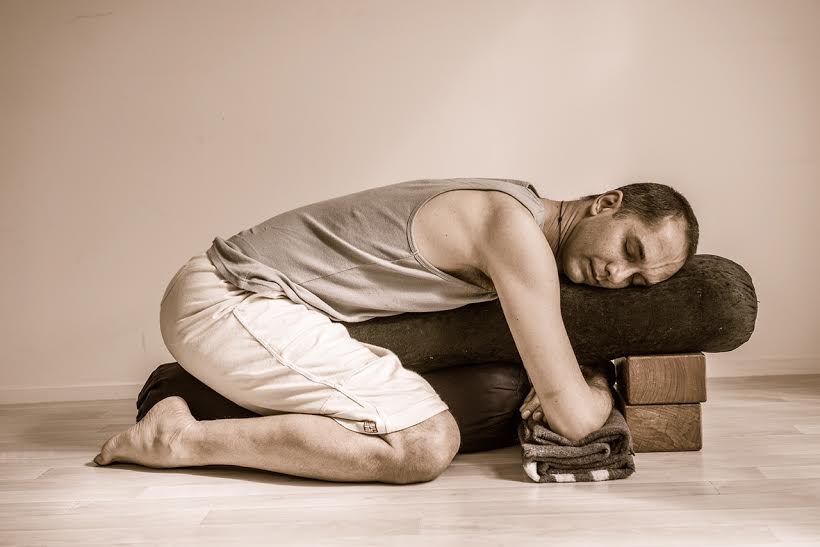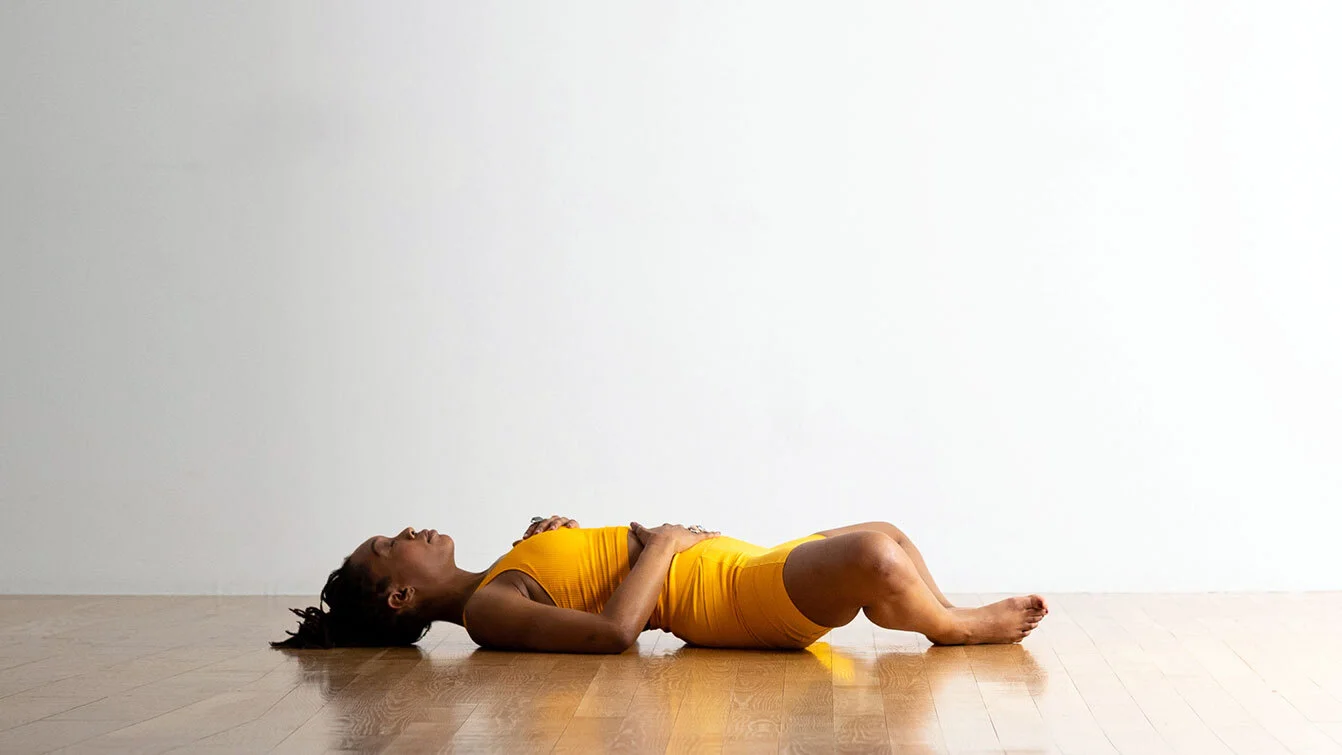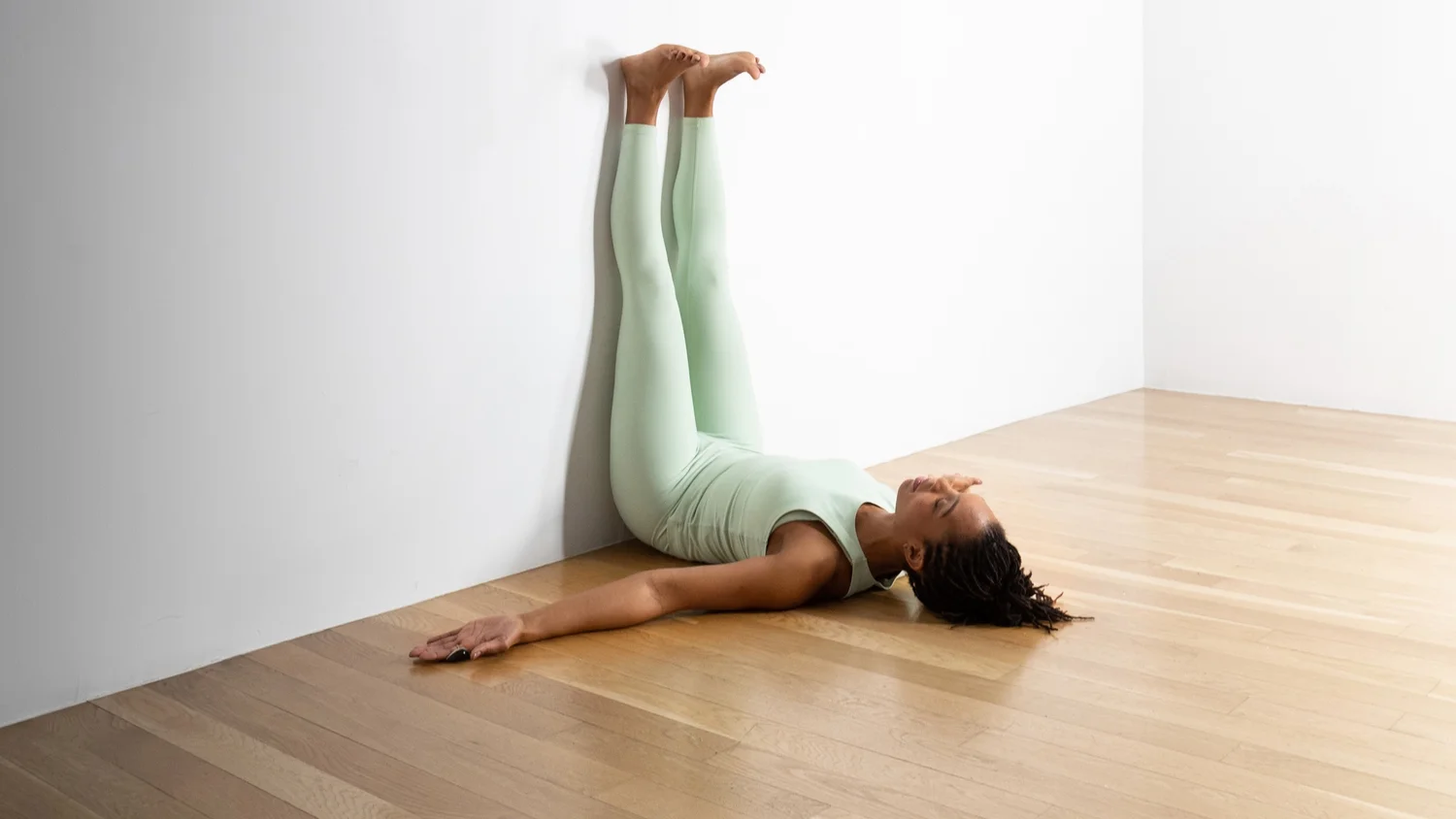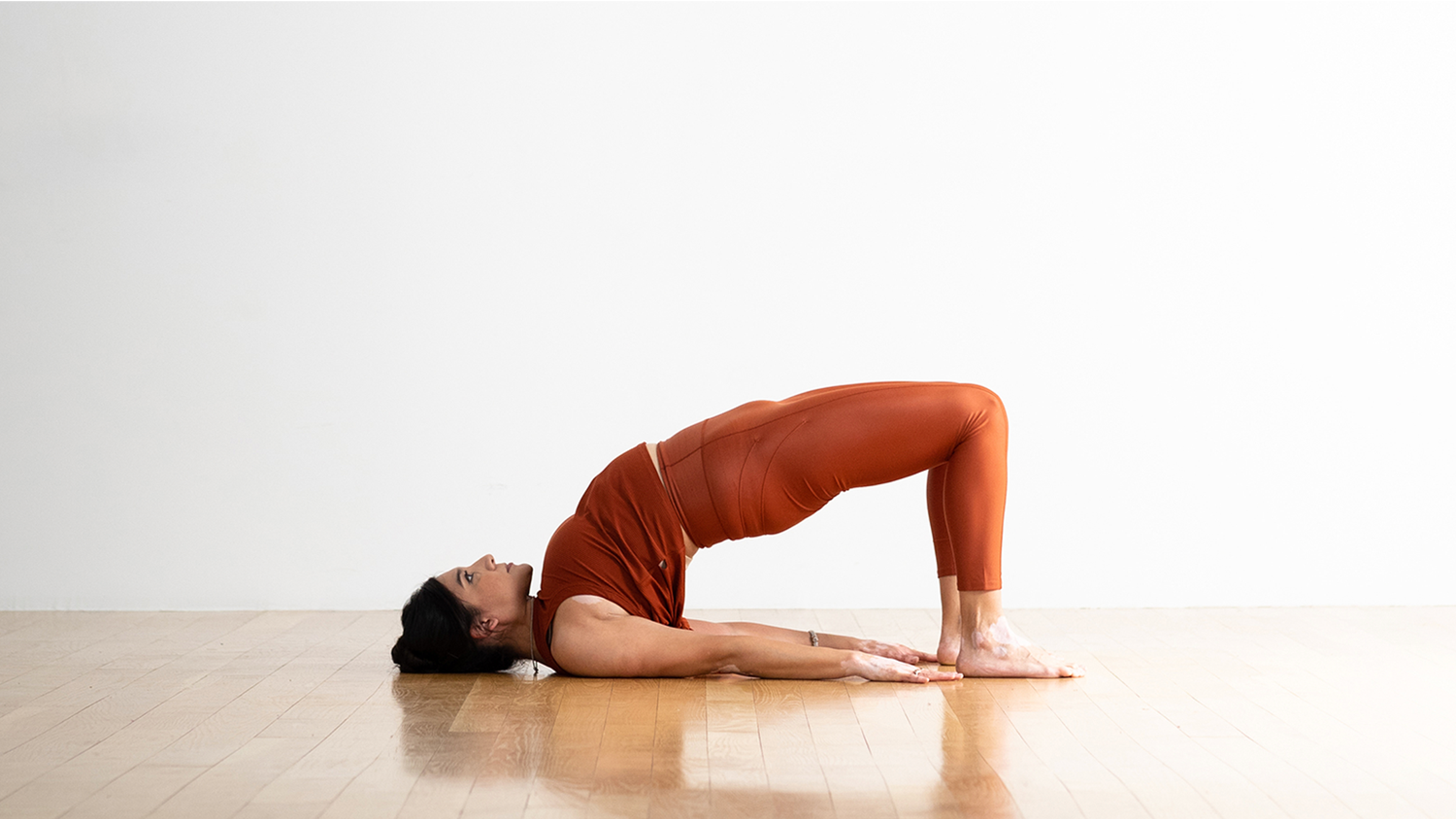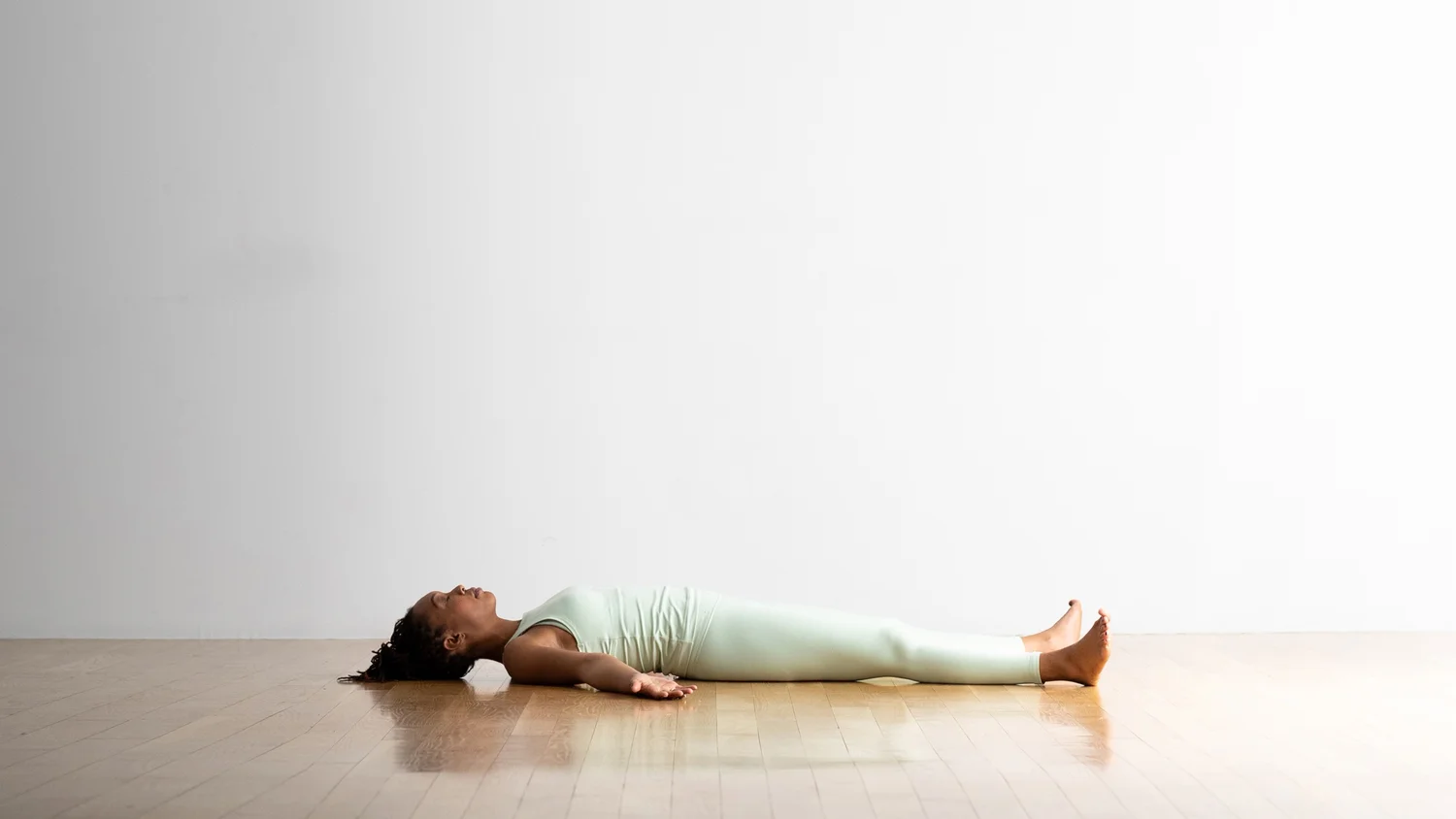Supported Childs Pose
A "Supported Child's Pose" is a restorative yoga pose where you perform a standard child's pose while resting your torso on a bolster or stack of blankets, providing significant support to your lower back and allowing for deeper relaxation and stress release
